PHOTOS: Drought consumes China's most vital waterway, revealing historic structures and riverbeds

The Yangtze River, China's longest waterway and a vital part of its economy, is drying up.
China's central provinces have been hit by months of high temperatures and a dearth in rainfall.
As the Yangtze recedes, once-submerged old structures and riverbeds can now be seen again.
China's Yangtze River, at times called the life blood of the country, has reached its lowest level in 60 years, authorities have said.
The country's central provinces of Sichuan, Hubei, Chongqing, Hunan, Jiangxi, and Anhui have been hit by a two-month heatwave that's dried up dozens of reservoirs and rivers that the Yangtze normally fills.
On Monday, China issued a high-temperature red alert, the most severe warning in its four-tier system, for the 11th consecutive day. What's supposed to be the central region's annual wet season has turned into a drought that's snowballing into an economic and power supply crisis.
These photos show what China's cities look like as the Yangtze recedes to near-record low levels.
The Guanyin Pavilion stands tall above the Yangtze.
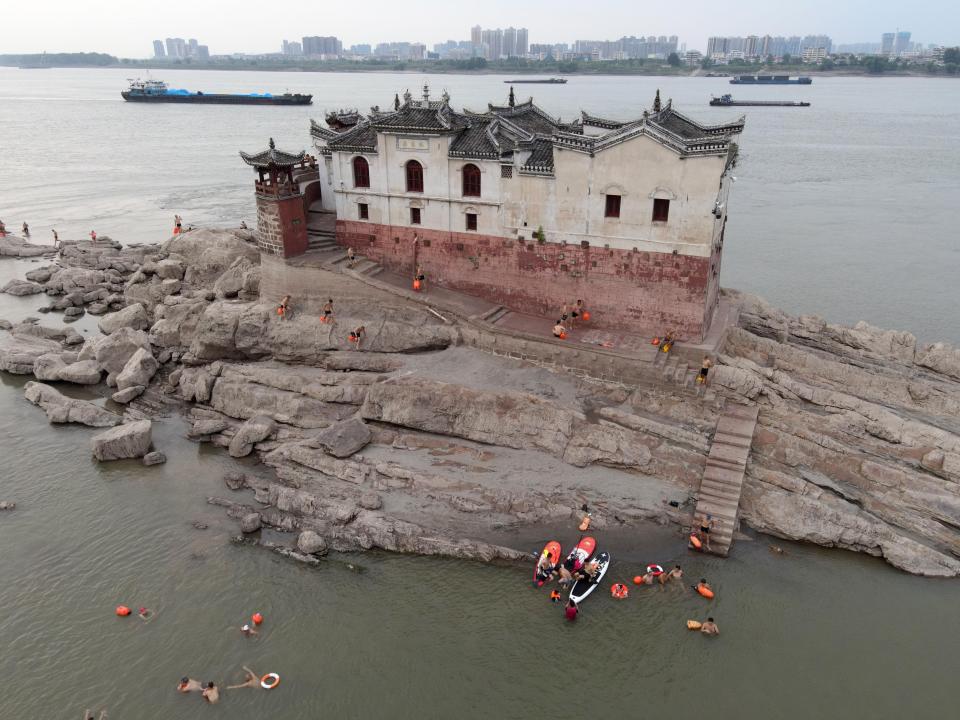
The Guanyin Pavilion sits right in the middle of Ezhou's waterway, amid the urban backdrop of a city of 1 million people.
Visitors to the pavilion typically travel there by boat, but people can be seen here wading around the base of the rock upon which the structure was built.
The pavilion looked like this when it was flooded in the summer of 2020.

The Guanyin Pavilion has stood for 700 years, Chinese state broadcaster CGTN reported.
It's cared for by a local museum, which said the structure wouldn't take severe damage unless the water started to cover the roof, per CGTN.
The financial center of Chongqing has baked in months of sweltering heat.

Chongqing is a sprawling metropolis of 22 million people, located where the Yangtze meets another major river — the Jialing.
The heatwave has hit Chongqing hard, with the city recording at least eight consecutive days of temperatures at 104 Fahrenheit, per state-affiliated outlet The Global Times.
The outlet reported that 51 rivers and 24 reservoirs have dried up in Chongqing.
The drought is also turning into a power crisis for China's central provinces.
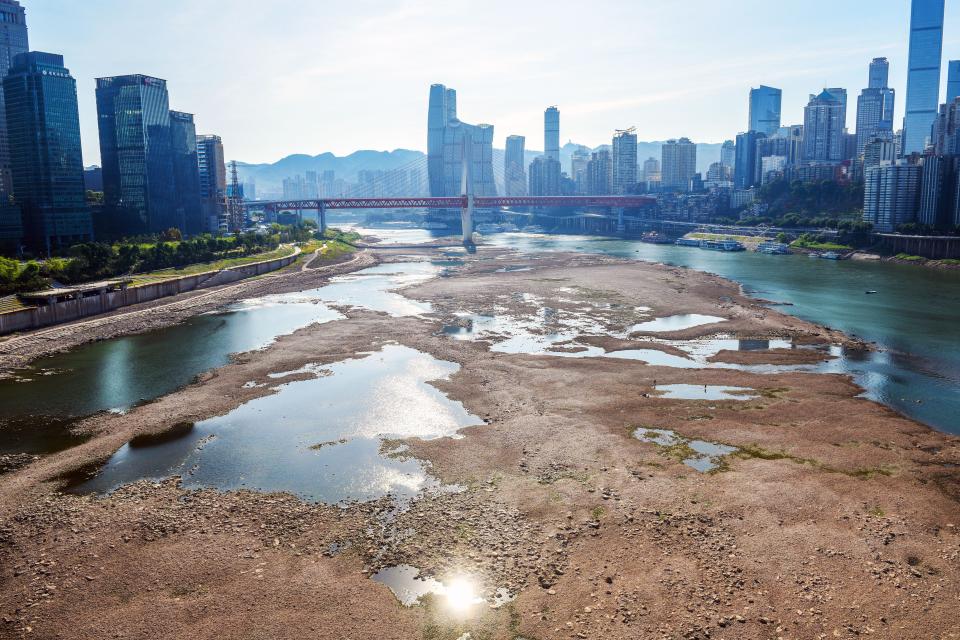
The loss of Yangtze's water has been devastating to the region, which relies largely on hydropower.
For instance, Sichuan province — located next to Chongqing — gets 80% of its energy from hydropower, The Guardian reported.
Last week, authorities ordered factories for major companies like Foxconn and Intel to shut down so power could be conserved for critical services such as hospitals.
And as the heat pushes residents to rack up air-conditioning usage, power demands have shot up by 25%, authorities said. "It can be said that the power supply has entered the most severe and extreme moment," Sichuan Daily wrote.
The Yangtze river usually swells this time of the year, sometimes subjecting Chongqing to floods.

The Yangtze typically looks like this as it passes through Chongqing during the wet season.
The muddy waters of the Yangtze clash with the clearer Jialing River, producing what's been dubbed "yin yang water" in reference to the Chinese philosophy concerning the connection between opposite forces.
However, the city now looks the way it would during the dry season.
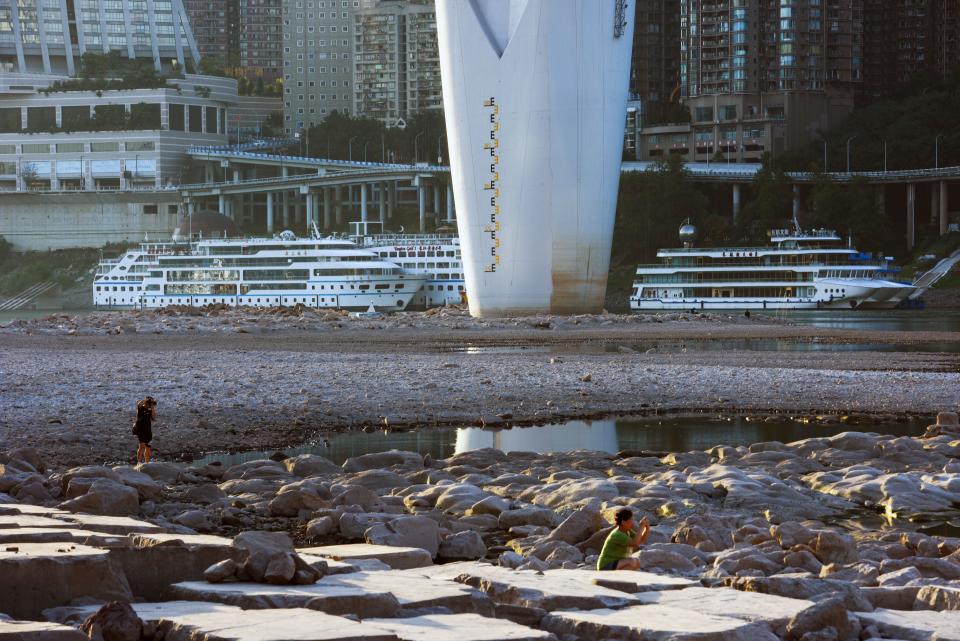
Residents are used to the river depleting during the dry season, and some like to venture out onto the riverbed for leisure. With this year's drought, however, they can do so at a time when the river levels historically should be dozens of feet higher.
Chongqing has also suffered from the power shortages that have been crippling the rest of central China. On Monday, authorities announced that they would cut short the opening hours of malls to help reduce the city's power demand.
A sand beach lies exposed in Wuhan, Hubei province.
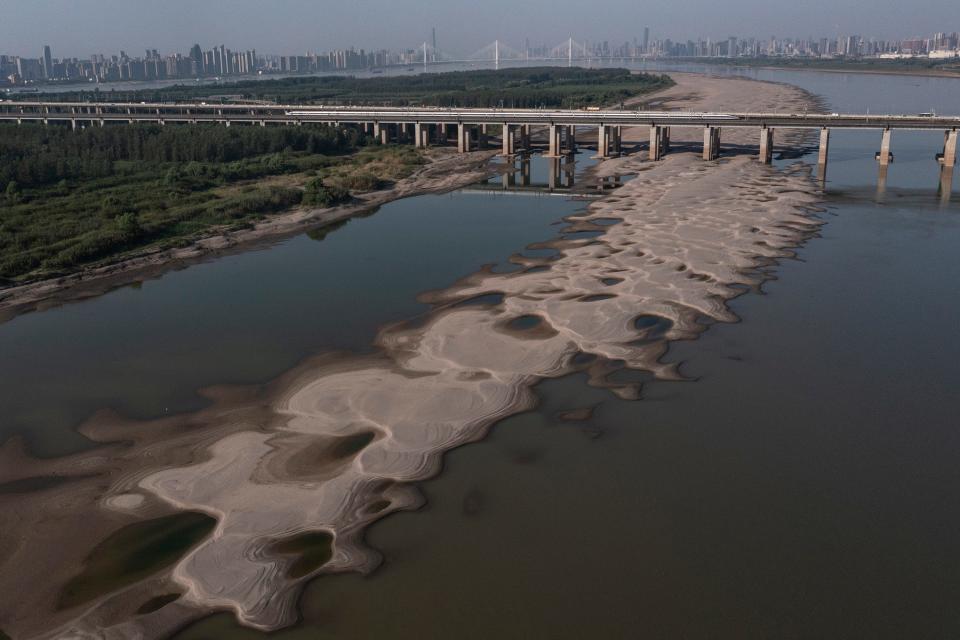
In the central city of Wuhan in Hubei province, some measuring stations recorded a 60-foot drop in water levels, The South China Morning Post reported.
The Yangtze crossing in Wuhan looks more like this on a typical wet season day.
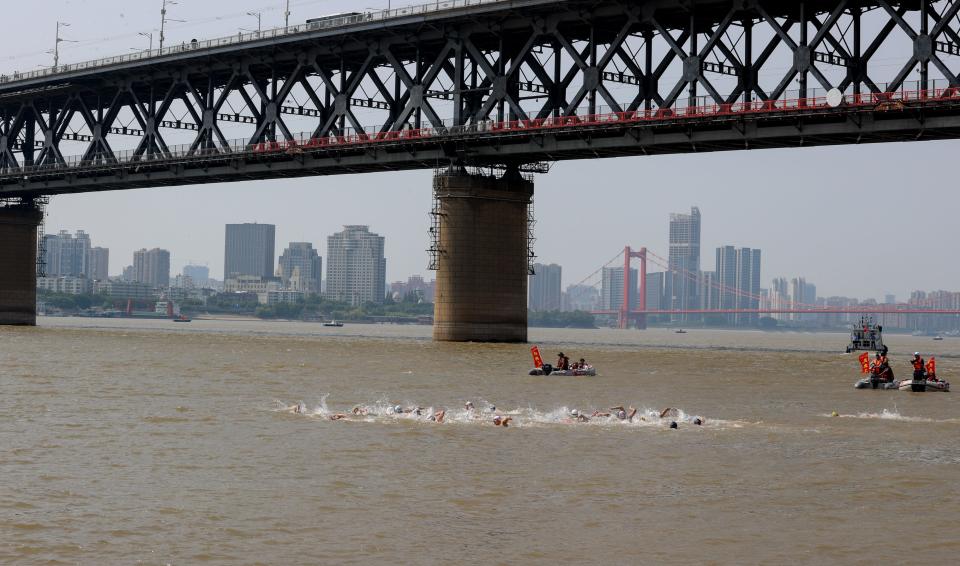
Last month, the Yangtze's water levels were still high enough to hold Wuhan's river crossing festival, which involves an open swim of about 1.1 miles. In past years, the festival's organizers had been concerned about the river possibly overflowing instead of drying up.
The drought has unveiled a Buddhist statue that was submerged for years.
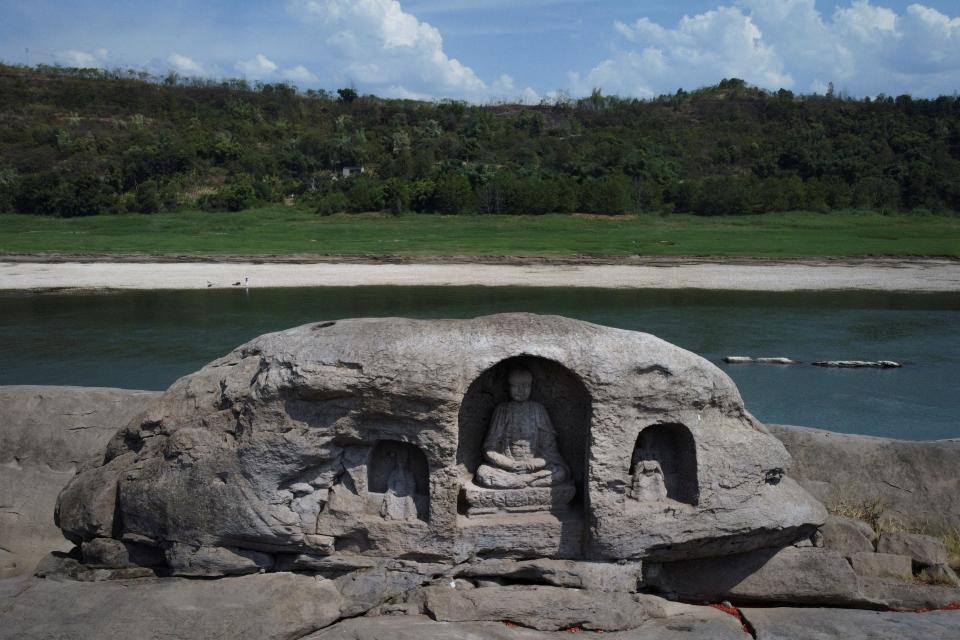
In Chongqing municipality, the Yangtze river has dropped so low that it's unveiled a trio of previously submerged niches in a rock.
One of the niches contains a Buddha statue of Liang Moya, which researchers and archaeologists from local centers inspected on August 11 for the first time, Xinhua News reported.
They estimate that the statue is 600 years old, per Xinhua.
In Jiujiang, Jiangxi province, authorities have declared a drought emergency.

Jiujiang authorities said the province of Jiangxi had lost around $146 million in production because of the severe drought, per Xinhua. The state outlet did not name the industries that had been affected.
The 1,000-year-old historic Luoxingdun islet stands exposed as Poyang Lake disappears.
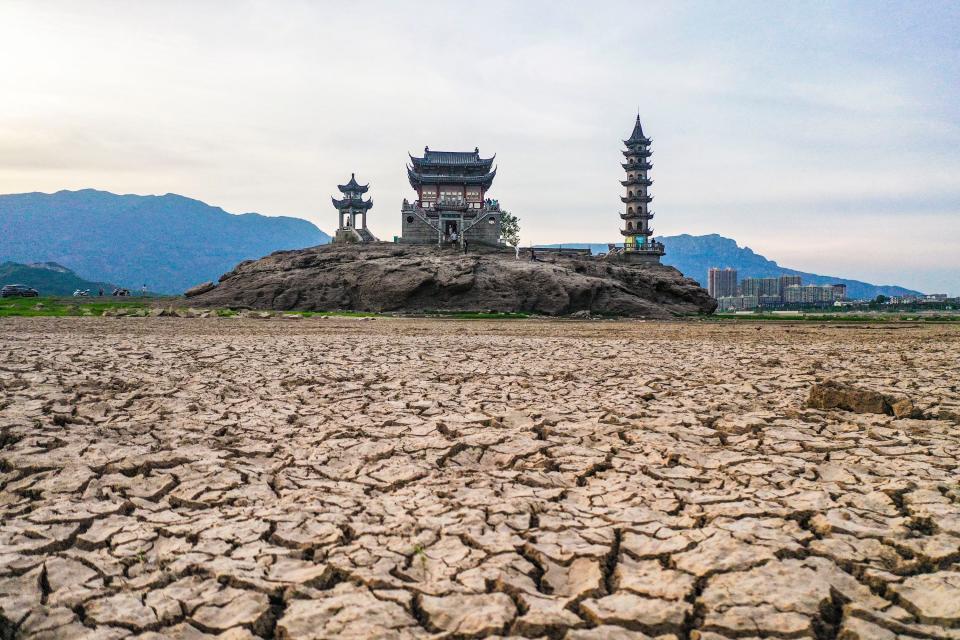
The lake bed surrounding Luoxingdun had previously dried up in January 2015 — during the dry season — allowing visitors to literally walk to the historic site.
The islet was inundated by flood waters in July 2020 when the Poyang lake swelled.

When the Yangtze swelled in the summer of 2020 —its heaviest flooding since 1961 — Luoxingdun was almost totally submerged in water.
Poyang is China's largest freshwater lake and is a major outlet for the Yangtze river.
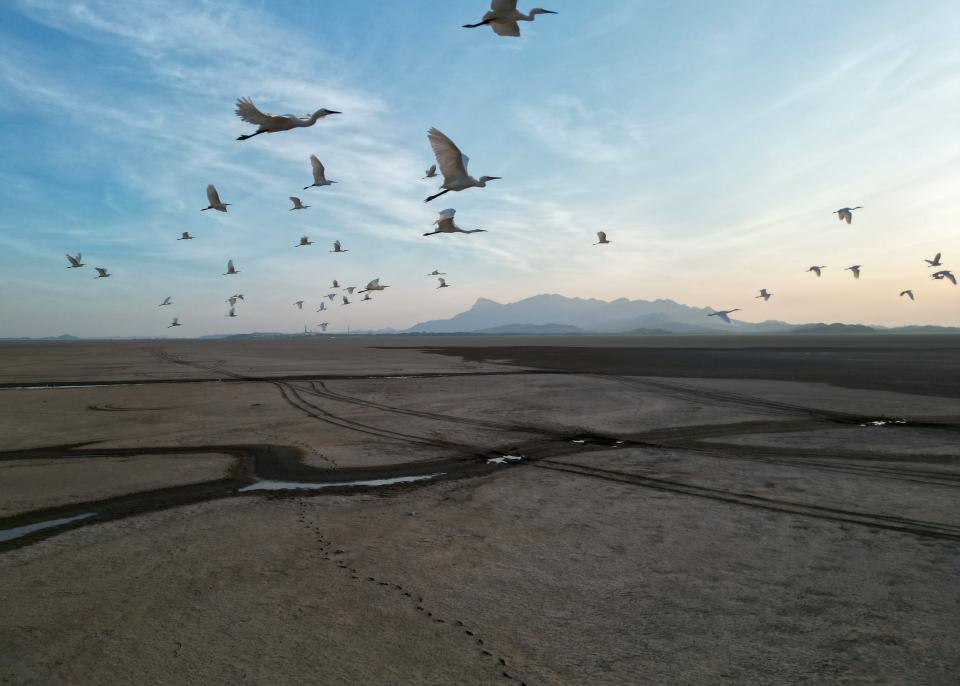
The lake entered the dry season on Sunday, the earliest date it's ever done so in 71 years, The People's Daily reported.
Dried clams seen on the bed of Shijiu Lake in Nanjing, Jiangsu province.
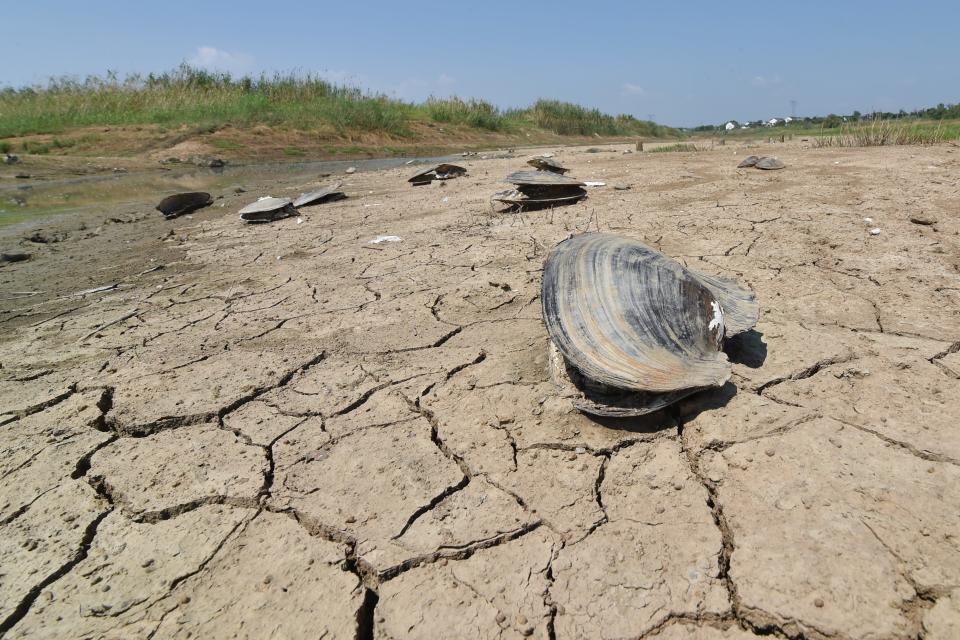
Shijiu Lake is just west of Shanghai and is typically known for its scenery as well as a long bridge that runs over its waters.
Read the original article on Insider


